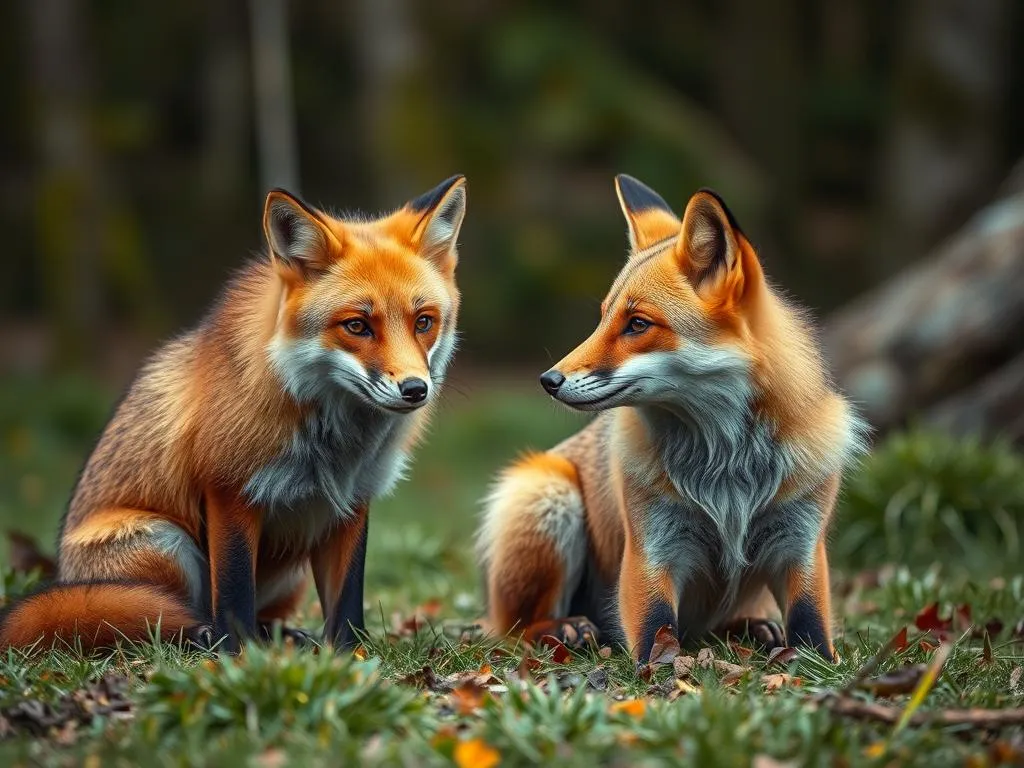
The world of wildlife is endlessly fascinating, especially when exploring the intricate relationships between different species. Among these relationships, the question of whether foxes are related to dogs often arises. Both foxes and dogs belong to the same family, Canidae, but how closely are they related? Understanding this relationship not only sheds light on their biology and behavior but also deepens our appreciation for these remarkable animals.
The Biological Classification of Foxes and Dogs
Taxonomy Overview
Biological taxonomy is the science of naming and classifying organisms. In the context of foxes and dogs, this classification falls under the family Canidae, which includes a variety of species such as wolves, coyotes, and domestic dogs. The Canidae family is further divided into two subfamilies: Caninae, which includes dogs, wolves, and foxes, and Canidae, which encompasses more distant relatives.
Specific Species of Foxes
There are several species of foxes, each with unique characteristics and behaviors. The most common species include:
- Red Fox (Vulpes vulpes): This is the most widespread fox species, known for its adaptability to various habitats, including urban areas.
- Arctic Fox (Vulpes lagopus): Adapted to cold climates, the Arctic fox has thick fur and a unique white coat in winter.
- Fennec Fox (Vulpes zerda): This small desert fox is known for its large ears and nocturnal habits, thriving in the Sahara Desert.
These foxes exhibit fascinating behaviors, such as complex social structures and unique hunting techniques that vary based on their environments.
Domestic Dogs: A Brief History
Domestic dogs have a rich history, tracing back thousands of years to their common ancestors with wolves. Through domestication, humans have selectively bred dogs for various traits, leading to the diverse array of dog breeds we see today. From the tiny Chihuahua to the majestic Great Dane, each breed has unique characteristics that reflect their specific roles in human society, whether as companions, workers, or guardians.
Genetic Relationship Between Foxes and Dogs
Shared Ancestry
The evolutionary path of foxes and dogs reveals a shared ancestry that dates back millions of years. The common ancestor of all canids is believed to have existed around 10-15 million years ago. Over time, this ancestral lineage branched out into various species, including the modern fox and dog. The divergence of these species highlights how environmental factors and natural selection shaped their adaptations.
Genetic Studies and Findings
Recent genetic studies have provided insights into the relationship between foxes and dogs. By analyzing DNA sequences, researchers have discovered that while foxes and dogs share a significant amount of genetic material, there are distinct differences that reflect their adaptations to different lifestyles.
One study found that domestic dogs and foxes share about 85% of their DNA, supporting the idea that they have a common ancestor. However, the genetic divergence between them showcases how domestication has influenced dogs’ behavior, morphology, and social structures, setting them apart from their wild relatives.
Behavioral Comparisons
Similarities in Behavior
Despite their differences, foxes and dogs exhibit various similarities in behavior. Both species are social animals, often living in family groups. They share hunting techniques, using keen senses to locate prey, and employ vocalizations to communicate with each other. For instance, both foxes and dogs use barks, howls, and yips to convey messages, although the context and meaning behind these sounds can differ.
Differences in Behavior
The most notable differences between foxes and dogs arise from the domestication process. While dogs have been bred for specific traits, leading to a wide range of behaviors aligned with human companionship, foxes remain wild animals with instinctual behaviors.
Foxes tend to be more solitary than dogs, often hunting and foraging alone. Their behaviors are closely linked to survival in the wild, whereas dogs exhibit a broader range of behaviors influenced by their interactions with humans. For example, dogs are often more trainable and responsive to commands due to their long history of living alongside humans.
Habitat and Lifestyle Differences
Natural Habitats
When examining the habitats of foxes and dogs, stark contrasts emerge. Foxes are highly adaptable creatures, found in diverse environments ranging from forests and grasslands to urban areas. Their habitats are often characterized by the availability of food sources, such as rodents and birds, as well as shelter for denning.
Domestic dogs, on the other hand, have evolved to thrive in human environments. Their habitats are typically homes and communities, where they rely on humans for food, shelter, and companionship. Some breeds have even adapted to specific roles, such as herding, guarding, or hunting, shaping their lifestyles in relation to human activity.
Interaction with Humans
The interaction between foxes and humans is markedly different. While dogs are domesticated and have formed strong bonds with humans, foxes remain wild animals. Foxes may sometimes venture into urban areas, scavenging for food, but they generally avoid human contact. This avoidance is a survival instinct, as foxes are not as accustomed to the presence of humans as dogs are.
In recent years, there has been a growing interest in keeping foxes as pets, leading to debates about the ethics and practicality of such practices. Unlike dogs, foxes have not undergone the same level of domestication, resulting in behaviors that may not be suitable for a household environment.
Cultural Significance
Foxes in Folklore and Mythology
Throughout history, foxes have held significant cultural value across various societies. In many cultures, they are depicted as cunning and clever creatures, often featured in folklore and mythology. For instance, in Japanese culture, the fox or “kitsune” is regarded as a mystical being with magical powers, symbolizing intelligence and adaptability.
In Western folklore, foxes are often portrayed as tricksters, embodying both charm and deceit. This complex representation has contributed to the mystique surrounding these animals, shaping public perceptions and cultural narratives.
The Role of Dogs in Human Society
In contrast, dogs have been celebrated as loyal companions and valuable helpers throughout history. Their roles have evolved from hunting partners to service animals, therapy companions, and beloved pets. The bond between humans and dogs is profound, often characterized by loyalty, companionship, and mutual support.
Historically, dogs have been integral to human societies, serving as protectors, herders, and hunters. Their diverse roles highlight their significance in various cultures, reinforcing the idea that dogs are not merely pets but vital members of human communities.
Modern Representation in Media
Both foxes and dogs have found their way into popular culture, represented in literature, films, and art. Foxes are often depicted as clever characters, while dogs are portrayed as loyal heroes or companions. For example, animated films like “Zootopia” feature fox characters that embody cunning traits, while classics like “Lady and the Tramp” showcase the deep bond between humans and dogs.
This representation plays a crucial role in shaping societal views, influencing attitudes toward these animals based on their portrayed characteristics.
Conservation and Ethical Considerations
Fox Conservation Efforts
As urbanization and habitat loss continue to threaten wildlife, conservation efforts for various fox species have become increasingly important. Many fox species are facing population declines due to habitat destruction, hunting, and climate change. Organizations and wildlife agencies are working to protect these animals by preserving their habitats, promoting awareness, and implementing legal protections.
Efforts such as habitat restoration, public education campaigns, and research initiatives aim to ensure a sustainable future for fox populations. These conservation strategies emphasize the need to coexist with wildlife while respecting their natural behaviors and habitats.
Ethical Treatment of Dogs and Foxes
The ethical treatment of both dogs and foxes is a pressing concern in today’s society. As pet ownership increases, understanding the responsibilities that come with it is vital. Proper care, training, and socialization are essential for dogs to thrive in human environments.
Similarly, the debate surrounding the domestication of foxes raises significant ethical questions. While some individuals advocate for keeping foxes as pets, others argue that their wild instincts and complex needs make them unsuitable for domestic life. Responsible wildlife conservation practices must prioritize the natural behavior and well-being of foxes, ensuring they are respected as wild animals.
Conclusion
The relationship between foxes and dogs is a captivating study of evolution, behavior, and cultural significance. While they share a common ancestry within the Canidae family, their paths have diverged significantly due to domestication and environmental adaptations. Understanding these differences and similarities enriches our appreciation for both species, highlighting their unique roles in the ecosystem and our lives.
As we continue to explore the natural world, recognizing the importance of conserving wildlife and treating domestic pets ethically is crucial. Both foxes and dogs deserve our respect and care, reminding us of the intricate connections we share with the animal kingdom. By fostering a deeper understanding of these relationships, we can contribute to a more harmonious coexistence with the diverse species that inhabit our planet.









